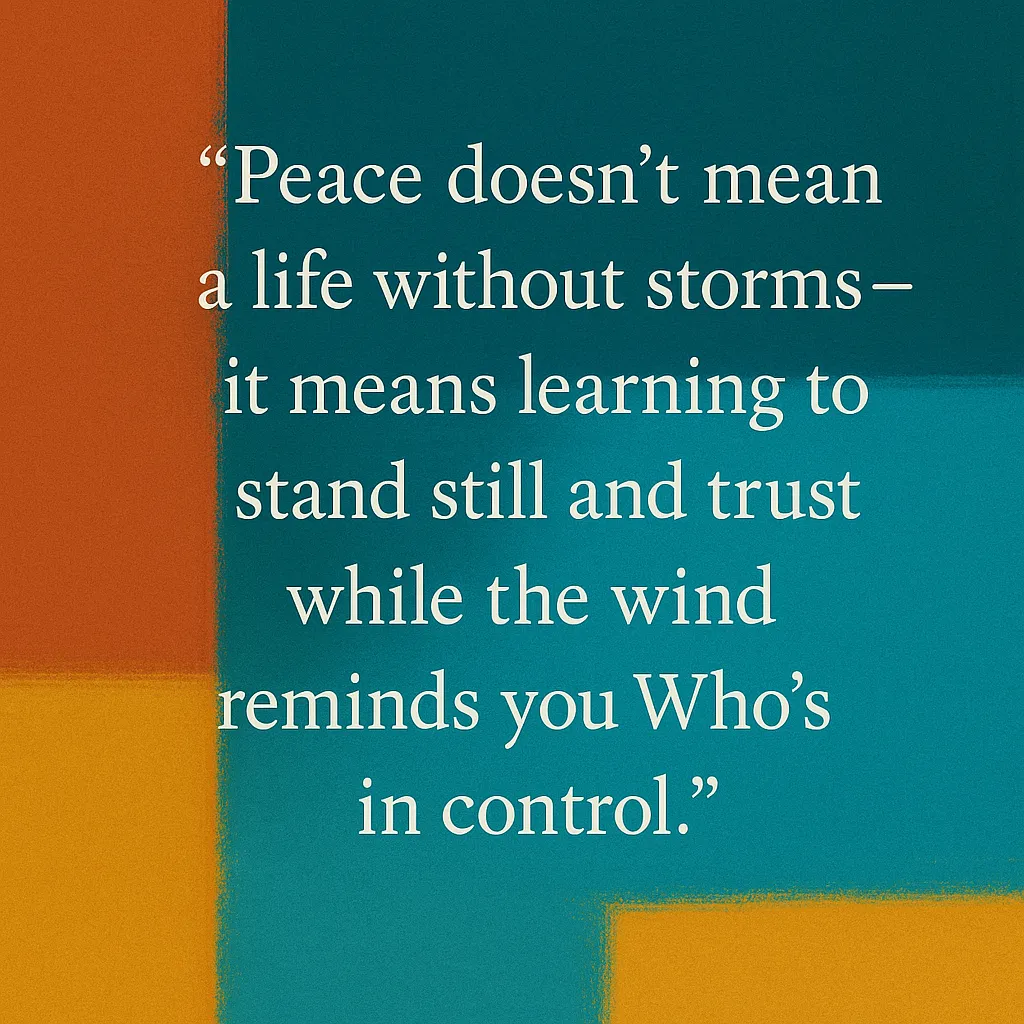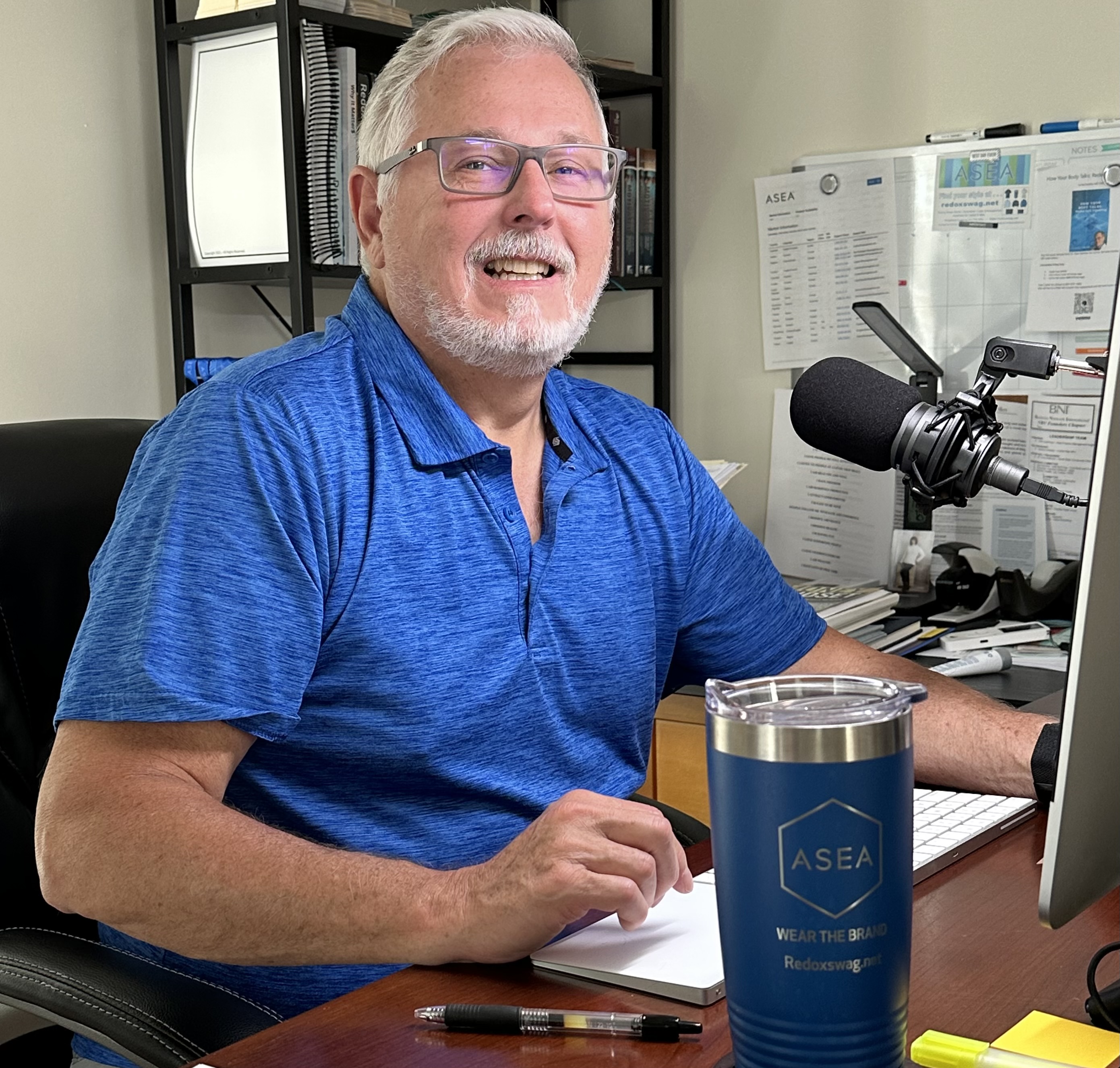
Standing Still in the Storm: Why Trusting the Journey Beats Fighting the Wind
You and I both know the storms are real.
Maybe your storm came as a medical emergency, like mine did. One day I was cruising, active, feeling intact. The next I had a stroke. A moment of gravity forever changed my story.
Maybe your storm is emotional, an unexpected loss, a betrayal, a job gone, or a dream deferred.
Here’s what I’ve learned: peace doesn’t mean a life without storms, it means learning to stand still and trust while the wind reminds you Who’s in control.
And in that truth lies the seed of a rebuilt life.
Why “standing still” isn’t passive
When I say “stand still,” I don’t mean give up. I don’t mean cease acting. I mean: stop the frantic fight against what you cannot change, so you can align with what you can change, your response, your trust, your posture.
Research on post-traumatic growth shows that many who endure a storm come out not just resilient, but transformed.
In spirituality studies, surrendering to what is and trusting what unfolds is not weak, it’s the core of the path.
Somatic spiritual practices (the ones where your body, mind, and spirit meet) show that rebuilding trust inside your own being is key to healing.
Standing still is really about anchoring, a rooted posture inside the storm.
Trusting the path while the wind blows
Here’s the spiritual quote I live by and share with you:
“ “Peace doesn’t mean a life without storms, it means learning to stand still and trust while the wind reminds you Who’s in control.”
Let’s unpack it.
Storms will come.
No matter your discipline, your fitness, your momentum, the unexpected can hit. My stroke taught me that. You can strive, but you can’t always prevent the wind.
Psychology research calls it “adversity,” and notes that the way we relate to it matters more than the fact that it came.
Standing still=being rooted.
When the wind blows and trees bend, the deeply rooted ones don’t break. This isn’t surrender to inaction, it’s strength disguised as stillness.
Trust while the wind reminds you Who’s in control.
Here’s the pivotal mindset shift: you are not the wind. You are the tree. The wind may test you, but you don’t have to control it. You only need to control your roots, your trust, your ground, your posture.
In the spiritual realm, trusting the unseen, the not-yet-understood, the not-yet-seen is foundational. “The spiritual path is a path of learning to trust in something that we cannot see, that our mind cannot know, that we cannot control.”
The transformation hidden in the storm
I want you to see this: storms aren’t just things to survive. They can transform. And you, like me, have the capacity to rebuild—not just your health, but your entire identity, posture, and life mission.
Research-backed truths:
In post-traumatic growth literature, five domains of transformation are common:
Greater appreciation of life
Warmer relationships
Increased personal strength
New possibilities
Spiritual development
Spirituality is a major protective factor in recovery after disasters or major life changes.
Resilience built intentionally means you don’t just bounce back—you build roots so deep the next storm shakes but doesn’t uproot.
From my journey: I accepted that my body had changed. I accepted discomfort became a daily traveler. But I also accepted that image of me would change—not for less, but for more. I shifted from “active body” to “steady warrior with roots in faith, will and intention.” That shift changed everything.
4. How to stand when the wind blows: a practical blueprint
Here’s how you can apply this in your life, right now.
• Anchor your identity in truth, not performance.
Your value is not in your output, your strength, or your illness status. Your value is in the One who steadies you.
“ When we are on a path of spiritual awakening, we are going to be required at some point to take a leap of faith.”
S So leap…grow roots.
• Practice surrender + trust, daily.
Some days the wind is mild. Some days it’s a gale. Each day invite this statement: “I may not control the wind, but I control my roots.”
The paradox: surrendering control can trigger empowerment.
• Build your resilience “bank account.”
That means small, daily acts of faith and trust.
Journaling what you’re learning rather than what you’re fearing.
Choosing gratitude while in pain (this rewires the brain).
Engaging your body in movement—even just to remember you’re still alive and able.
• Use your storm to serve your purpose.
Your pain is not wasted. It becomes a lens for empathy, authenticity, and connection. My stroke became my message.
Post-traumatic growth tells us that deeper relating and new possibilities emerge.
• Stay present, but don’t stop moving.
Standing still is not stagnating. It means you’re not fighting the wind, you’re moving in alignment.
Ask: “What’s the next obvious step I can take, even if small?” Just like one spiritual guide suggested.
• Connect with others who root you.
You don’t build roots in isolation. Support, community, shared faith, they matter. Research shows social support is vital in growth after hardship.
5. Real-life anchors from my story
Since my stroke:
I learned that stiffness and pain became daily teachers, instead of enemies. They taught me patience and attention.
I stopped chasing “what I used to be” and started stewarding “who I’m becoming.”
I began sharing that journey through my podcast, newsletter, and blog—not as a triumph story (yet) but as an in progress story. That authenticity connects.
I saw that trust wasn’t just a nice spiritual phrase, it was a physical, mental, emotional adoption. My body needed to feel safe rooting while the wind blew.
If you’re hurting: I see you.
If you feel unmoored: I’ve been there.
If you wonder “what next”: You’re literally in the fertile soil of your next chapter.
6. Your invitation today
Here’s your call to action, Yes, Mr. “MOVE” himself would want this:
MOVE 1: Take 5 minutes and write out the storms you’re in, the winds around you.
MOVE 2: Write out what you can’t control, and then underneath write what you can control (your roots).
MOVE 3: Share the sentence: “While the wind reminds me Who’s in control, I choose to…” and fill in your commitment.
MOVE 4: Find one way today to root: a prayer, a conversation, a slow breath, a small act of service.
7. Final word
You don’t have to wait for the wind to stop. You don’t even have to wait until you feel “ready.”
You stand now. You trust now. You root now.
Because the truth is: peace isn’t the absence of storms, it’s the presence of trust, deeply planted, unshaken.
If you feel the wind, let it remind you: you are alive. You are becoming. And you are being rebuilt.
Here’s to your rebuilt life…standing still, rooted, trusting.
With you in the journey,
Bob
🌿 Ready to rebuild your peace and purpose? Visit BobPriest.online and book your free 15-minute consultation today, because your comeback starts with one conversation. ✨
